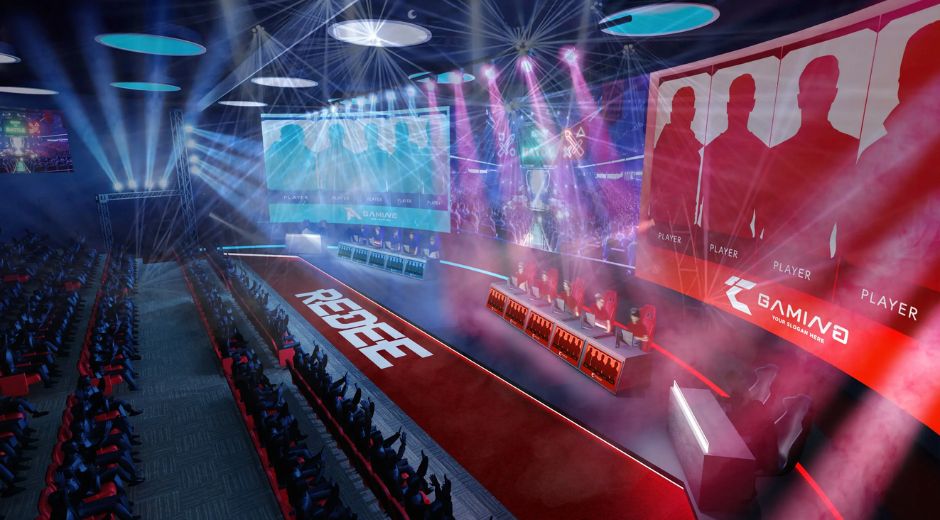Virtual Arenas: The Evolution of Modern E-sports Venues
Virtual Arenas: The Evolution of Modern E-sports Venues
The world of E-sports has evolved dramatically over the past decade, with competition moving from local gaming clubs to global stages filled with thousands of fans. At the heart of this growth are the venues themselves. These spaces, whether physical or digital, have become essential to the spectator experience, offering immersive, high-energy environments for both players and audiences alike.
1. The Early Days of E-sports Venues
In the beginning, E-sports venues were modest. Tournaments were held in small halls, convention centers, or even internet cafes. Despite their size, these locations were groundbreaking for the time, providing a dedicated space for gamers to compete and fans to witness the action.
The intimacy of these early settings created a strong community feel, where enthusiasts could engage directly with players. Although limited in technology and scale, these initial arenas set the foundation for the modern competitive landscape.
2. Transition to Larger Physical Spaces
As E-sports gained popularity, tournament organizers recognized the need for larger venues to accommodate growing audiences. Iconic locations such as stadiums and convention centers began to host major events.
These spaces featured advanced lighting, high-definition screens, and professional sound systems, providing fans with an immersive experience. The evolution of these locations mirrored the rise of E-sports from niche hobby to mainstream entertainment.
For more insight into gaming technology and event setups, check out PC Gamer.
3. Virtual Arenas: Gaming in the Digital Space
The advent of online streaming and virtual platforms transformed E-sports venues once again. Digital arenas allow players and fans to connect without physical boundaries. Platforms like Twitch, YouTube Gaming, and emerging VR environments offer highly interactive experiences, replicating the excitement of real-world locations.
These digital spaces have the flexibility to host tournaments of any scale, from local events to international championships. This accessibility has democratized E-sports, allowing global participation and viewership.
4. Designing the Perfect E-sports Environment
Modern venues blend functionality, aesthetics, and technology. Physical arenas incorporate features like tiered seating, large video walls, and ergonomic player stations. Meanwhile, virtual settings prioritize interactivity, realistic graphics, and spectator engagement.
Event organizers focus on creating a seamless experience, where both live and online audiences can enjoy matches equally. Elements such as crowd simulation, customizable viewpoints, and immersive audio contribute to a truly next-gen environment.
5. The Role of Technology in Evolution
Technology has been a key driver in the transformation of E-sports venues. High-speed internet, advanced broadcasting tools, and VR integration have redefined the spectator experience.
For fans, this means unprecedented access to matches and player stats in real-time. For players, sophisticated setups enhance performance and minimize latency. Innovative solutions are continuously being adopted, ensuring that both physical and digital arenas remain cutting-edge.
Explore more on advanced gaming setups and technologies at EcoGlobalo.
6. Iconic Physical E-sports Locations Around the World
Certain venues have achieved iconic status in the E-sports community. The Staples Center in Los Angeles, the Mercedes-Benz Arena in Berlin, and the Shenzhen Bay Sports Center in China have hosted major tournaments, drawing tens of thousands of fans.
These spaces not only accommodate large audiences but also showcase the grandeur and professionalism of modern E-sports. They set a benchmark for design, fan engagement, and tournament execution worldwide.
7. Virtual Arenas and the Future of E-sports
Looking forward, virtual arenas are poised to become increasingly sophisticated. With VR and AR technologies, fans can experience matches as if they were physically present, even from thousands of miles away.
Future digital venues may feature fully interactive environments, personalized spectator experiences, and real-time social integration. This evolution ensures that E-sports continues to grow as a global entertainment powerhouse.
For tips and coverage on upcoming tournaments and innovations, check out Gaming News Head.
8. Impact on Players and Spectators
The transformation of E-sports venues has had a profound impact on both players and audiences. Players benefit from professional setups that enhance performance, while spectators enjoy immersive experiences that make every match exciting and memorable.
As arenas continue to innovate, they foster stronger communities, elevate competition standards, and contribute to the legitimacy and popularity of E-sports as a professional sport.
9. Conclusion
From humble beginnings in internet cafes to sprawling stadiums and cutting-edge digital arenas, E-sports venues have come a long way. They not only host competitions but also shape the experience of players and fans alike.
With technology pushing the boundaries, these venues—both physical and virtual—will continue to evolve, creating unparalleled experiences for a global audience. Understanding the evolution of E-sports venues offers insight into the future of competitive gaming.
Gaming Made Simple

How the Competitive Mindset Shapes Modern Esports in 2025
Explore how the competitive mindset drives coaching, training, team strategy, and player growth across the global esports scene in 2025.

The Biggest Gaming Trends Shaping 2025 Worldwide
Explore the major gaming trends of 2025 that influence technology, esports, community growth, and player experience across the world.

The Best Gaming Monitors of 2025 for Every Type of Player
Discover the best gaming monitors of 2025, offering top refresh rates, sharp visuals, and advanced features for all gaming styles.













